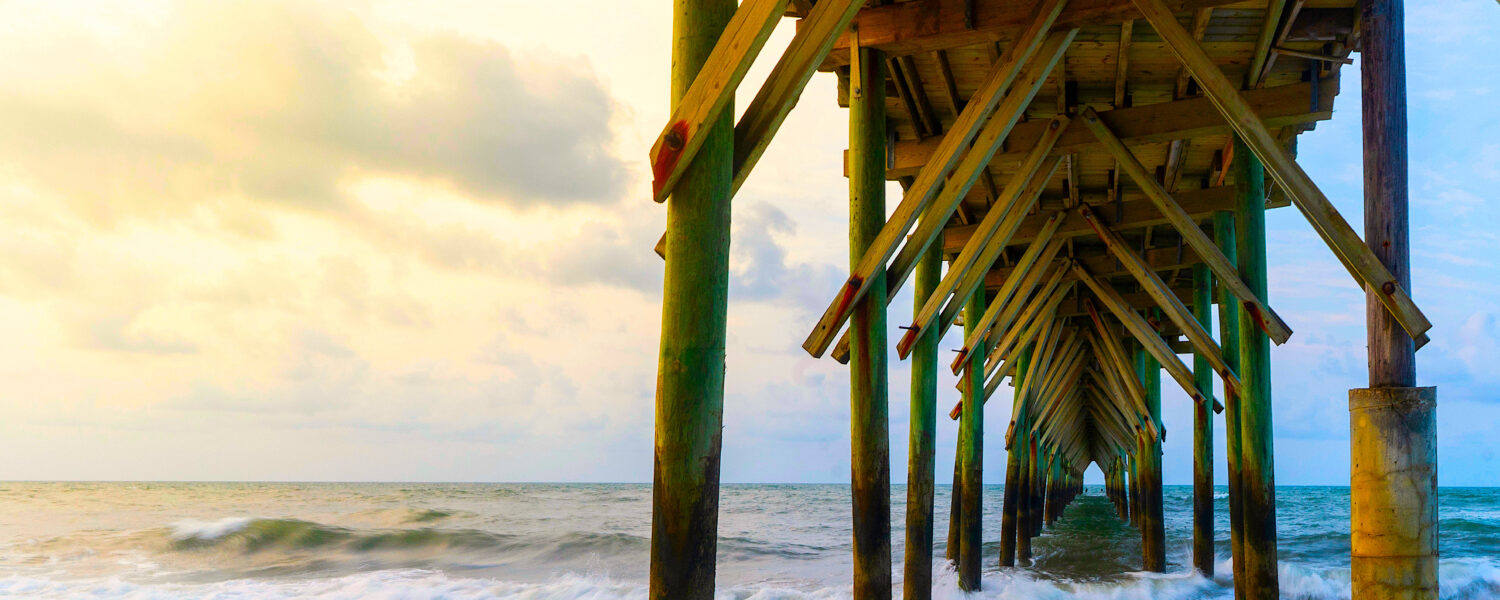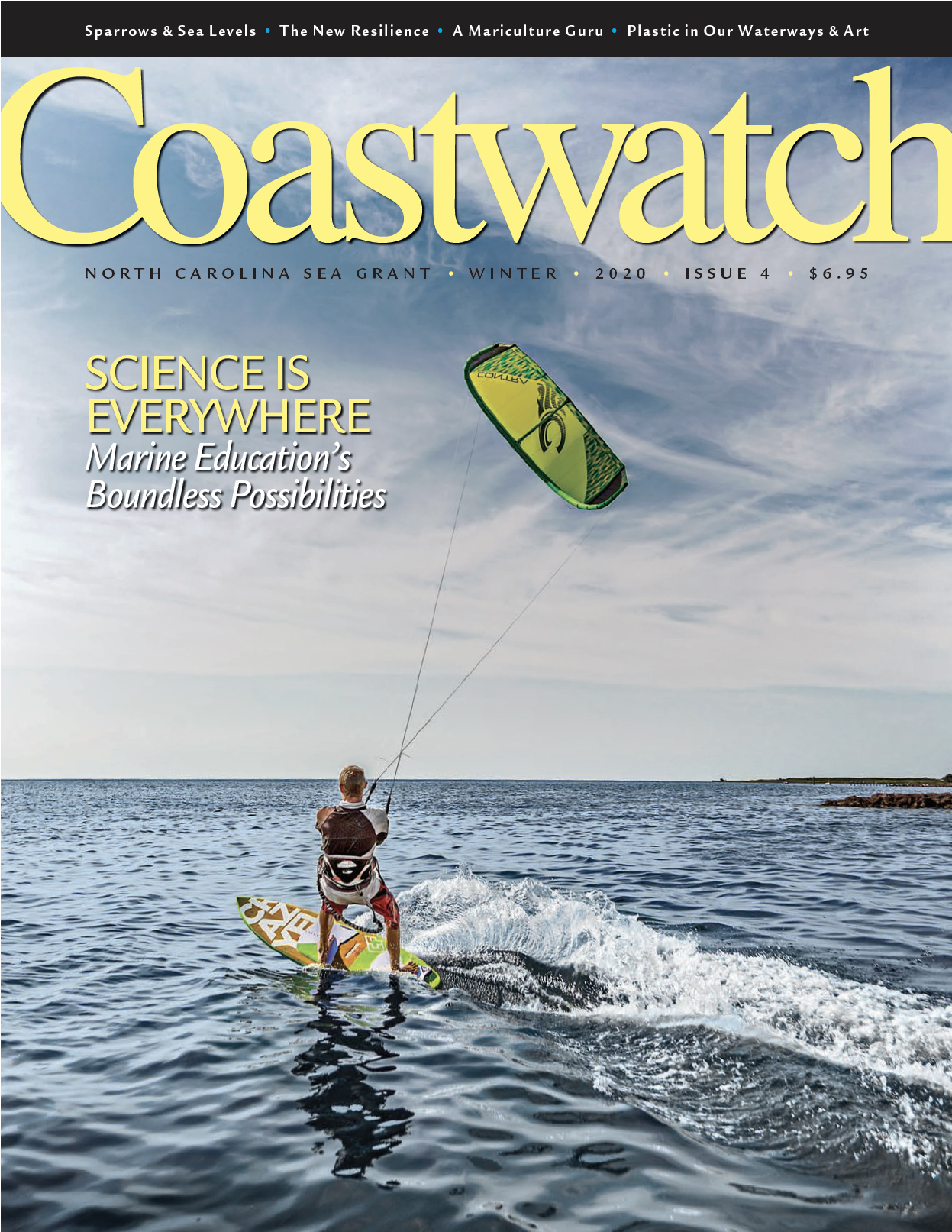Coastwatch Magazine Highlights Coastal Resilience, Climate Change and More

For Immediate Release
Contact:
Dave Shaw, dmshaw@ncsu.edu
Katie Mosher, kmosher@ncsu.edu
Coastwatch magazine released its Winter issue today. The latest edition of North Carolina Sea Grant’s award-winning publication explores climate change and other coastal hazards, building resilience along our coast, and much more.
In “Plan, Respond, Recover, Adapt,” North Carolina Sea Grant’s new coastal resilience specialist Sarah Spiegler tells why resilience means more than merely “bouncing back.” Spiegler, whose previous writing for Coastwatch earned honors last year, offers an updated definition of resilience that can help our state address and adapt to climate change and other coastal hazards.

As North Carolina’s shellfish aquaculture industry booms, new and established growers alike turn to Jimmy Morris for sage advice. Morris repeatedly has demonstrated resilience in adapting his family business for intensifying coastal hurricanes and economic challenges, and North Carolina Sea Grant’s Katie Mosher profiles his life in Sea Level, North Carolina, on a “finger between two bays.”
With severe flooding events on the rise, Olivia Vilá wanted to gauge their effects on the Latina and Latino community in Wilmington. In “The Winding Path of Research,” she explains how, when nobody showed up for her study, she changed course — and her work subsequently shed new light on environmental justice.
In addition to affecting coastal communities and businesses, climate change also impacts the environment and species who depend on it. In “Sparrows and Rising Seas,” Lauren D. Pharr explores Marae Lindquist’s work, which indicates that by 2060 two coastal study sites now supporting hundreds of saltmarsh and seaside sparrows might only provide suitable habitat for 25.
In addition to climate change, the North Carolina coast remains vulnerable to other hazards. Julie Leibach explores how plastic of all shapes and sizes taints land, air, and water, and she describes new efforts to address plastic pollution in the state’s aquatic ecosystems. Leibach’s latest article caps another year of stellar writing for Coastwatch, which already has included awards from the N.C. Association of Government Information Officers both for the year’s Best Feature and runner-up for Best Feature for her stories in the Summer and Autumn issues.
From sinking sodas to seaweed in ice cream, marine education offers plenty to keep K-12 students curious, says Terri Kirby Hathaway. In “Science Is Everywhere,” North Carolina Sea Grant’s marine education specialist, on the eve of her retirement, provides her perspectives on how to engage students.
Does the moon affect offshore tournament catch rates? What’s that mystery fish on your plate? North Carolina Sea Grant fisheries specialists Scott Baker and Sara Mirabilio curate the latest research for anglers in Coastwatch’s new edition of Hook, Line & Science from the popular blog series, which marks its second birthday this week.
In addition, just in time for the holidays, Vanda Lewis has collected wintertime wonders for Mariner’s Menu, easy recipes for four savory dishes: classic oyster dressing, striped bass chowder, fresh spotted trout with herbs, and baked spotted trout with orange-rice stuffing.
As always, Coastwatch is available in print and online. Visit ncCoastwatch.org.
##
Over 180,000 people read Coastwatch online and in print.
Online: ncCoastwatch.org
In print: go.ncsu.edu/Subscribe-Now. New subscriptions will start with the Spring 2021 issue.
Permissions: Some of the content that appears in Coastwatch is available to republish. Email dmshaw@ncsu.edu.
Recent Awards: APEX Award for Communication Excellence, National Sea Grant Honors for Excellence in Communication, Best Print Publication from the NC Association of Government Information Officers (NCAGIO), Best Feature (NCAGIO), Runner-up for Best Feature (NCAGIO).
lead photo courtesy of VisitNC.com
- Categories:


